This article will help you in knowing how to view website visitor statistics using Awstats in cPanel. The data is displayed in simple graphs and lists when the web server log files have been parsed. Awstats and Webalizer are two website traffic statistics tools offered in cPanel.
To view website visitor statistics using Awstats, follow the steps:
- Log in to cPanel account.
- Navigate to “Metrics” category and click on the “Awstats” option.
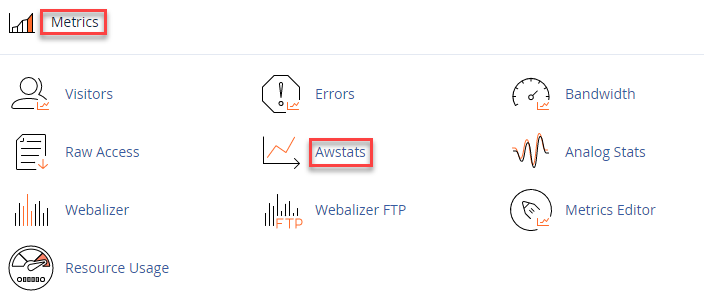
- Select the domain and click on the “View” link under “Actions” column.

- The statistics for the domain will be displayed. You can directly select the stats from the left side menu.
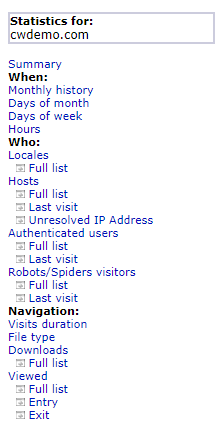
- On the main page you will find the date and time of the “Last update”.
- The next option is “Reported period”; you can select whether you want monthly, daily, or hourly report. Then set the month, year and click on the “Ok” button.
- You will find different sections-
- Summary: This section consists of unique visitors, Number of visits, Pages, Hits,and Bandwidth. The “Viewed traffic” row displays the volume of people who have visited your site. The majority of “not viewed traffic” comes from web crawlers (bots), which trawl the web and collect data for search engines.
- Monthly history: The 12-month graph in the “Monthly history” section shows the same categories as the summary. The year-long picture is exciting since it shows how your traffic patterns change according to the seasons. Web traffic generally grows throughout the cooler months of the year and decreases during the hotter summer months. You might observe other types of seasonal fluctuations depending on the subject matter of your website.
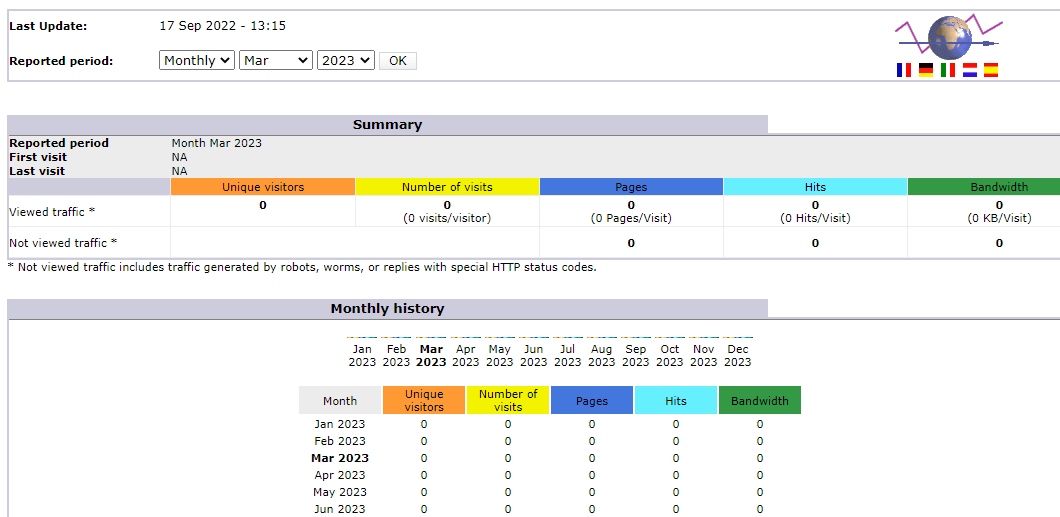
- “Days of week,” “Days of month,” and “Hours”: This sections also show visitor trends that are helpful for scheduling when you carry out updates or post new content.
- Locales: It displays a list of the top 25 nations where your visitors come from.
- Hosts (Top 25): The visitors’ IP addresses are the hosts (Top 25).
- Authenticated Users (Top 10): The visitors who have entered password-protected folders are listed under “Authenticated users”.
- “Robots/Spiders visitors (Top 25)”: The search engine spiders are listed here.
- Visits duration: It displays a list of time periods together with the percentage of your visitor sessions that took place during each one.
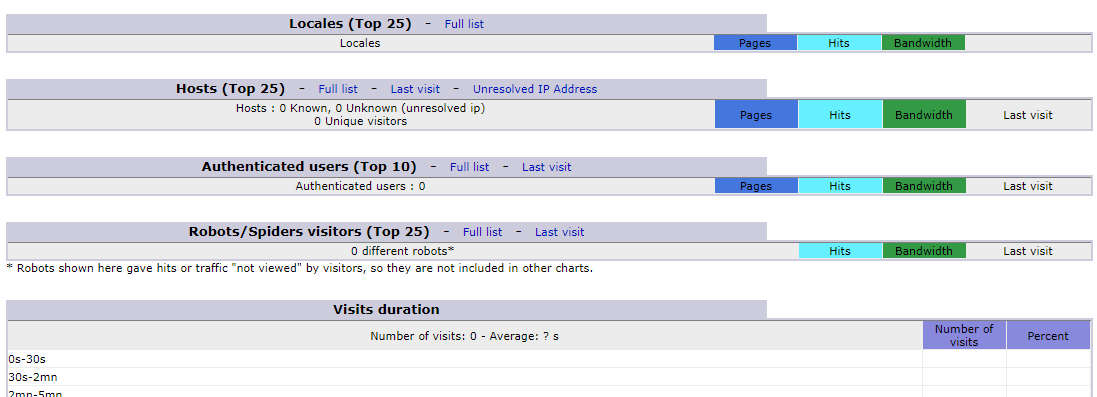
- File Type: File types are shown in order of how frequently they are accessed in the file type section of your website.
- Downloads (Top 10): The number of times files with “download extensions” have been requested is listed here. These are files like.pdf, .zip, etc. that are normally downloaded rather than seen in a web browser.
- Pages-URL (Top 25): The top 25 pages on your site are listed by their URLs in a list called Pages-URL (Top 25). This one is helpful because it displays exactly what visitors are looking at most and least.
- Operating systems (Top 10): The operating systems that your users use to access your website are listed in the Operating Systems (Top 10) section.
- Browsers (Top 10): List of the top ten browsers that users are using to access your website: Browsers (Top 10).
- Connect to site from: There is a list of referring URLs under connect to site from. A Referring URL is a link that directs visitors to your website from another website.
- Search Key phrases (Top 10)and Search Keywords(Top 25): Often, these are empty lists. These are empty because Awstats is searching the log files for keyword patterns. Unfortunately, the majority of search engines do not transmit the data in a fashion that Awstats can utilise.
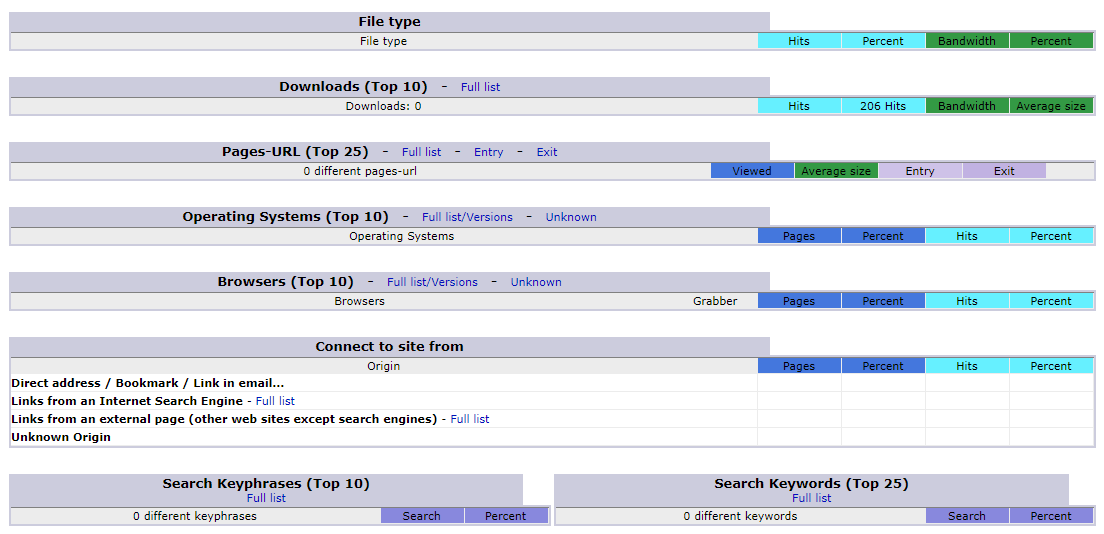
- Miscellaneous: The technologies that your visitor’s browser supports are listed under Miscellaneous. However, unless your site makes use of outdated or unpopular technologies, the information in this section is generally not very useful.
- HTTP Status codes: Because they represent the error messages that your visitors have seen, HTTP status codes are important. If you notice many problems of a certain kind here, you should examine your site’s architecture to determine what might be the problem.

Hope you liked this article and will definitely help you to get the most out of Awstats. If you face any difficulty, contact our support staff and get the issue solved within seconds.
